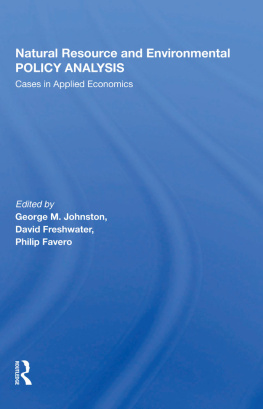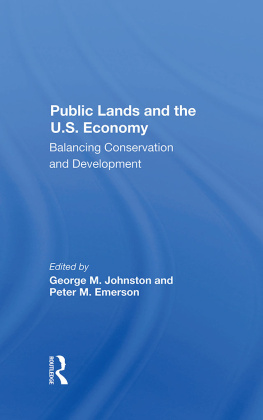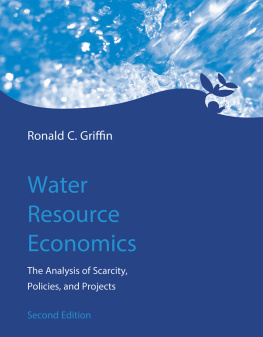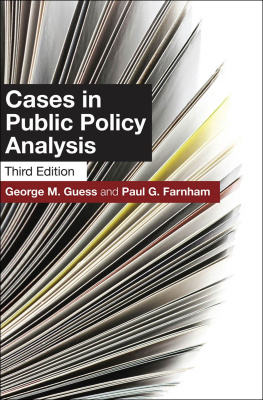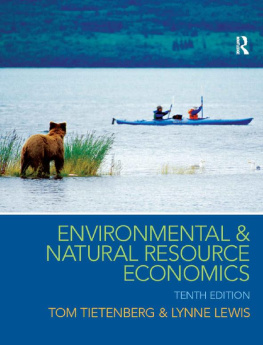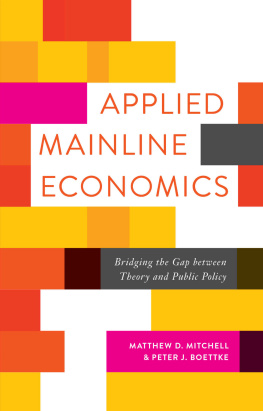Natural Resource and Environmental POLICY ANALYSIS
About the Book and Editors
As natural resources have become scarcer, issues of environmental policy have become more vital and subject to debate in global as well as local arenas. Through the use of case studies especially developed for this book, the authors analyze the wide range of institutional contexts in which natural resource and environmental policy issues arise and the processes by which they are resolved. The first chapter provides a theoretical framework of key resource and environmental economics conceptsan overview that gradually broadens as the student is exposed to alternative methods of analysis, including market-oriented analysis, institutional analysis, and modeling. The case studies all begin with discussions of the pertinent biological, physical, social, and institutional issues before economic analysis is applied and policy conclusions are drawn. Suggested readings and study questions follow each chapter.
This book is designed for use in upper-level college courses in natural resource and environmental economics and graduate courses in resource management. It can be used either as a primary text in conjunction with theoretical readings or as a supplemental source of case study readings. The cases will also be valuable for natural resource, environmental, and community development economists.
George M. Johnston is an associate economist with Planning and Development Collaborative International (PADCO). David Freshwater is a senior economist with the Joint Economic Committee of the United States Congress.
Philip Favero is an associate professor and extension economist at the University of Maryland.
Natural Resource and Environmental POLICY ANALYSIS
Cases in Applied Economics
George M. Johnston
David Freshwater
Philip Favero
EDITORS

First published 1988 by Westview Press, Inc.
Published 2021 by Routledge 605 Third Avenue, New York, NY 10017 2 Park Square, Milton Park, Abingdon, Oxon OX14 4RN
Routledge is an imprint of the Taylor & Francis Group, an informa business
Copyright 1988 by Taylor & Francis
All rights reserved. No part of this book may be reprinted or reproduced or utilised in any form or by any electronic, mechanical, or other means, now known or hereafter invented, including photocopying and recording, or in any information storage or retrieval system, without permission in writing from the publishers.
Notice: Product or corporate names may be trademarks or registered trademarks, and are used only for identification and explanation without intent to infringe.
Library of Congress Cataloging-in-Publication Data Natural resource and environmental policy analysis. Bibliography: p. Includes index. 1. Environmental policyCase studies. 2. Natural resourcesManagementCase studies. I. Johnston, George M. II. Freshwater, David. III. Favero, Philip. HC79.E5N355 1988 333.7 87-31601
ISBN13: 978-0-3670-0650-1 (hbk) ISBN13: 978-0-3671-5637-4 (pbk)
DOI: 10.4324/9780429036361
Contents
GEORGE M. JOHNSTON
Part One Political Institutions and Economic Outcomes
Introduction
2 Institutions, Incentives, and Agricultural Land Policy: A Case Study of a Wisconsin Law
RICHARD BARROWS
3 State Water Management Policy: The Florida Experience
ROY R. CARRIKER
4 Land Use Policies, Water Quality, and the Chesapeake Bay
PHILIP FAVERO, DAVID G. PITT, DEAN F. TUTHILL
5 Nuclear Waste Disposal Policy: Socioeconomic Impact Management Issues
RONALD C. FAAS
Part Two Economic Efficiency in Policy Analysis
Introduction
6 Acid Rain: An Issue in Canadian-U.S. Relations
DAVID FRESHWATER
7 National Forest Management: The Issue of Below-Cost Sales
DOUGLAS J. KRIEGER
8 Economic Rationale in the Development of Fisheries Management: Atlantic Striped Bass
IVAR E. STRAND, JR.
9 Dividing the Waters: Designing Management Institutions for the Columbia River
PHILIP WANDSCHNEIDER
Part Three Policy Analysis Using Mathematical Models
Introduction
10 Pest Management: Factors Influencing Farmer Decisionmaking
KAREN KLONSKY
11 The Greenhouse Effect and the Canadian Prairies: Simulation of Future Economic Impacts
LOUISE M. ARTHUR
12 Energy Policy Analysis: Alternative Modeling Approaches
MICHAEL LEBLANC, JOHN REILLY
- Part One Political Institutions and Economic Outcomes
- 2 Institutions, Incentives, and Agricultural Land Policy: A Case Study of a Wisconsin Law
- 3 State Water Management Policy: The Florida Experience
- 4 Land Use Policies, Water Quality, and the Chesapeake Bay
- 5 Nuclear Waste Disposal Policy: Socioeconomic Impact Management Issues
- Part Two Economic Efficiency in Policy Analysis
- 6 Acid Rain: An Issue in Canadian-U.S. Relations
- 7 National Forest Management: The Issue of Below-Cost Sales
- 8 Economic Rationale in the Development of Fisheries Management: Atlantic Striped Bass
- 9 Dividing the Waters: Designing Management Institutions for the Columbia River
- Part Three Policy Analysis Using Mathematical Models
- 10 Pest Management: Factors Influencing Farmer Decisionmaking
- 11 The Greenhouse Effect and the Canadian Prairies: Simulation of Future Economic Impacts
- 12 Energy Policy Analysis: Alternative Modeling Approaches
Guide
Tables and Figures
Tables
- 2.1 Schedule of current law farmland preservation tax credits effective for property taxes levied in 1983-1985
- 4.1 Negative externalities in the Chesapeake Bay
- 5.1 Comparison of alternative risk choices with alternative failure outcomes
- 6.1 Estimated costs and levels of emissions reduction at selected major Canadian emitters of sulfur dioxide
- 8.1 Summary of size limit regulations for Atlantic striped bass harvest
- 10.1 Relationship between pest population, actual yield, and the cost of control
- 10.2 Summary of a firm's pest management information
- 10.3 Hypothetical pest management alternatives
- 11.1 Technical coefficients and multiplier matrix
- 12.1 Carbon release in the production and combustion of fossil fuels
Figures
- 2.1 Percentage of farm acres protected by exclusive agricultural zoning and preservation agreements on December 31, 1985
- 3.1 Major aquifers in Florida
- 3.2 Major rivers and canals in Florida
- 4.1 The Chesapeake Bay
- 6.1 Conceptual design of an environment/emitter model
- 6.2 Total emission levels versus unit costs of abatement for selected emitters
- 6.3 Industry supply/demand curve
- 7.1 National forests and grasslands
- 7.2 Demand and total revenue functions
- 8.1 Georges Bank stock size and harvest, 1963-1985
- 8.2 Atlantic Coast harvest and Chesapeake Bay recruitment of striped bass, 1963-1985
- 8.3 Compensatory biological growth
- 8.4 Sustained yield-effort relationship
- 8.5 Average and marginal cost curves for fishery
- 8.6 Major East Coast spawning areas for striped bass
- 9.1 Columbia/Snake River Basin: Hydropower projects and primary future irrigation areas

